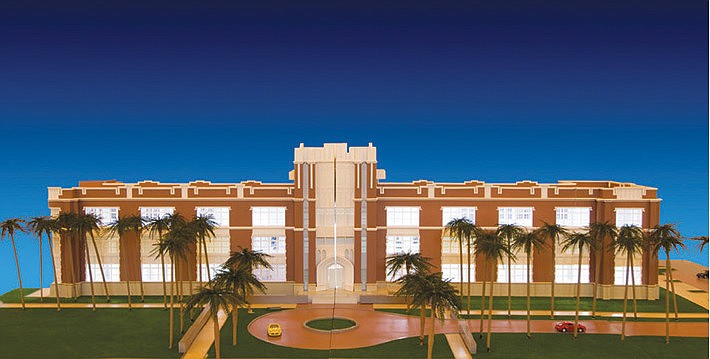- November 23, 2024
-
-
Loading

Loading

The Sarasota Museum of Art (SMOA) has been 10 years in the making. But, as of late May, the board exceeded its $22 million fundraising goal. This means renovations of historic Sarasota High School, where the museum will be housed, can begin this July. The museum will tentatively open in January 2016.
The first step toward filling the museum with art is hiring an executive director. An outside search firm is in the early stages of doing so. This person will then hire the small staff and iron out all the details.
SMOA will open as a non-collecting museum. This means the exhibitions curated at other museums will travel here. The multiple galleries of diverse exhibitions will be housed on the second floor, with the first and third floors hosting studio and educational space. You can see renderings of the plans at ringling.edu.
President of SMOA Wendy Surkis says it’s a huge achievement.
“It really is a glorious triumph for the community,” Surkis says. The museum has received great support from the community over the past 10 years.
The idea started Jan. 28, 2004, with a meeting of 13 like-minded individuals that hoped to open a contemporary art museum in Sarasota. For three months following, they hosted community meetings. The positive responses encouraged the core group to begin fundraising. In March 2004, the core group exceeded a $100,000 challenge grant in 32 days (they were given 45 days). There was no turning back.
“We were totally excited,” said Surkis. “We thought it was the greatest thing that ever happened … that was really the beginning.”
Soon after, the group proposed to the Sarasota County School Board that the museum would be housed in the historic Sarasota High School building. And, around that same time, SMOA became a division of Ringling College of Art and Design. In 2008, they got the keys to the building — and the rest was raising the funds.
“People kept stepping forward to say, ‘I believe in this project,’ and it was wonderful how they all wrapped their arms around it and brought it to fruition,” Surkis says.